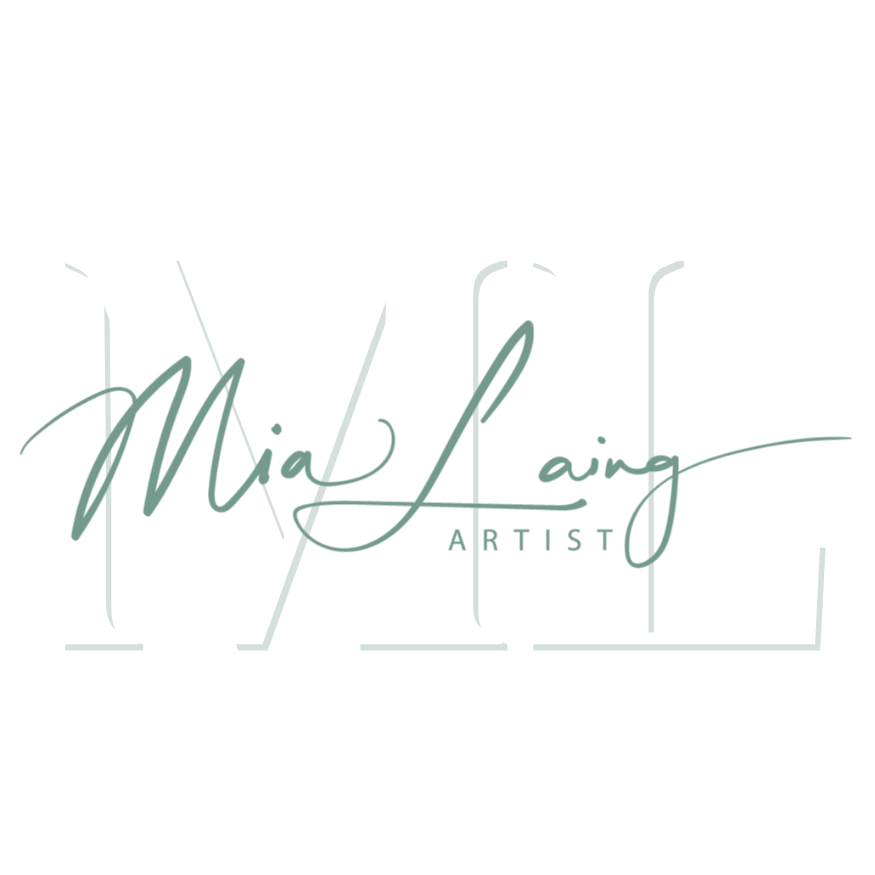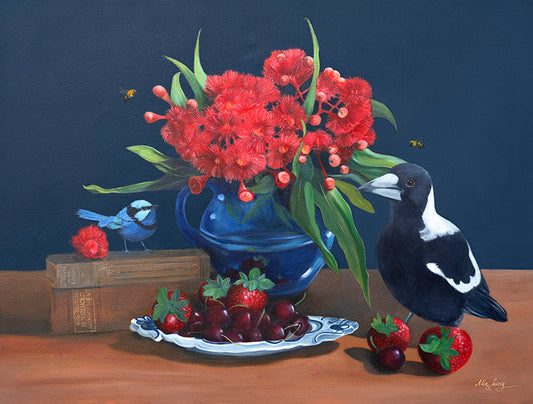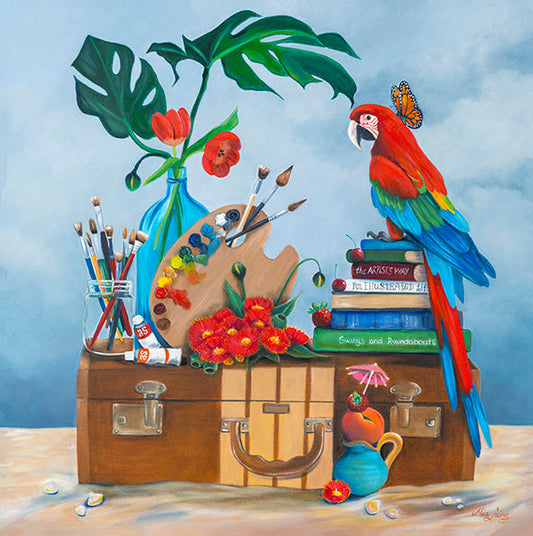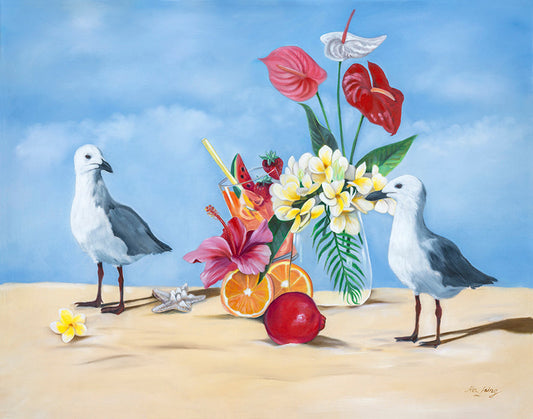Let's talk about the importance of composition in art.
My absolute Number One Tip and Trick for a successful painting, is to nail your composition, letting it be the underlying structure to every other decision you make.
Think of composition as the building block to how you structure the rest of your image. Make the foundation weak and your painting may collapse, no matter how good the lines, shapes, colours, values, forms, textures or spaces you use in the rest of the painting.
Composition is also the map that leads the viewers eye around the picture, thereby influencing their experience of it. A good composition should lead the viewer to the focal point; whether the underlying message of the art is dark and sombre, political or disturbing, or as simplistic as pure beauty and joy, hyper realistic or abstract, the composition will be the structure to this statement. Composition can be calming and soothing, or intriguing and appealing, but get it wrong and your viewer will remain lost and disorientated, not knowing how to navigate the image and what you are trying to portray.
In the most basic of terms, the best place to start your composition is with the focal point. Where do you want to guide the viewers eye? Whats the main focus of the picture?
To guide the viewers eye, there are various structures and elements that can be used...go easy here though, there is strength in using just a few elements to make the point, any more and they can compete for attention like squabbling seagulls.
The most simple way to create aesthetically pleasing compositions is with The Rule of Thirds.

and guiding the viewers eye to the main focus of the baby penguin in the snow globe.
The Rule of Thirds : dividing your composition into thirds, vertically and horizontally, then placing your focal point along these lines or junctions. (Approximately, not literally!)
After implementing the rule of thirds, you can further emphasis your focal point with other more refined techniques. Using a simple selection of these can be like adding variety to a bland diet...we get bored eating the same foods at every meal, so throw in some new flavours every now and then to spark interest, but not so much that you confuse the palate. After all, not many people want a huge plate of Italian with an equally huge side of Thai, a sprinkle of spice may just be enough.

Elements to use with The Rule Of Thirds
- Leading lines (converging lines that guide the eye to the focal point...the penguins all looking inwards is a simple leading line and also a use of movement.)
- Contrasting colours or shapes (eg.the red hibiscus and yellow of the frangipani contrasting with the dark penguins and sky.)
- Proportion (size, either big or small forms within the image.)
- Balance and symmetry.
- Movement.
- Variety and texture (including defined and/or lost edges and variety in brush strokes.)
- Colour and Value (balancing harmony with variety, and using darks and lights to make the image energetic.) Ive used a very refined palette in the above image...Ive used only a handful of colours in this painting... Red, yellow, indigo, green and unbleached titanium and white.
- Rhythm and repetition (patterns.)
- Use of Negative space - the space surrounding the main focus creates a 'rest' for the wandering eye of the viewer.
I know there is a lot of information on that list. Without turning this blog into a scholarly essay of intricate explanations, I implore you to research further to gain a basic understanding of composition techniques. The Rule of Thirds is just one and probably the most basic to understand. With enough practise, these techniques will happen intuitively and without much thought. There are some informative finds on google and thousands of books have been written on composition across art history.
Even the most basic understanding will enhance each and every painting you make.
Be sure to follow my blog for more Tips and Tricks, explained without too much arty jargon or fanfare, after all, its just life at the end of a paintbrush.
Mia x
Ps...My penguin painting needs a title! Fire away some suggestions please.
Its an oil on canvas, 76x76cm (Available)



